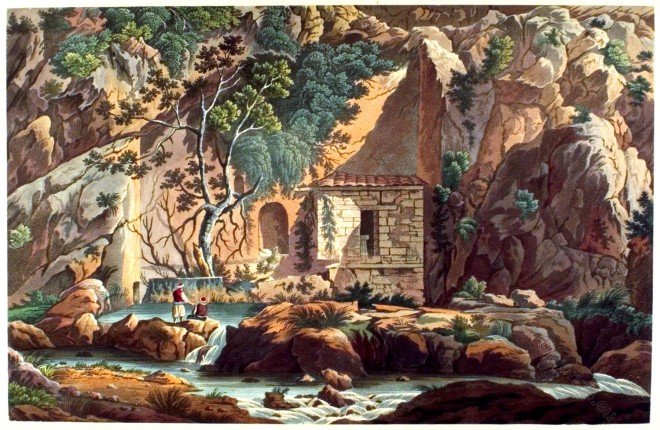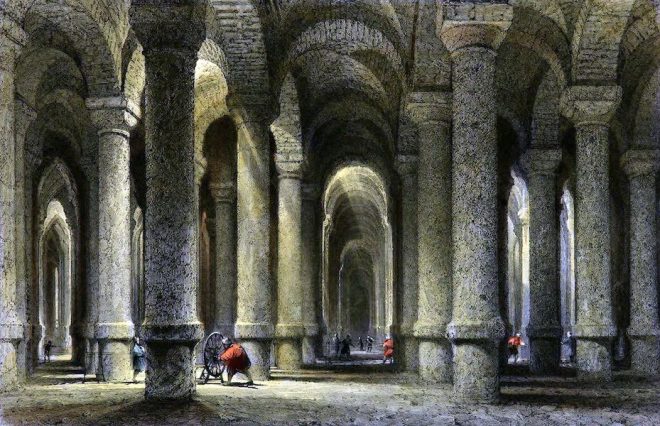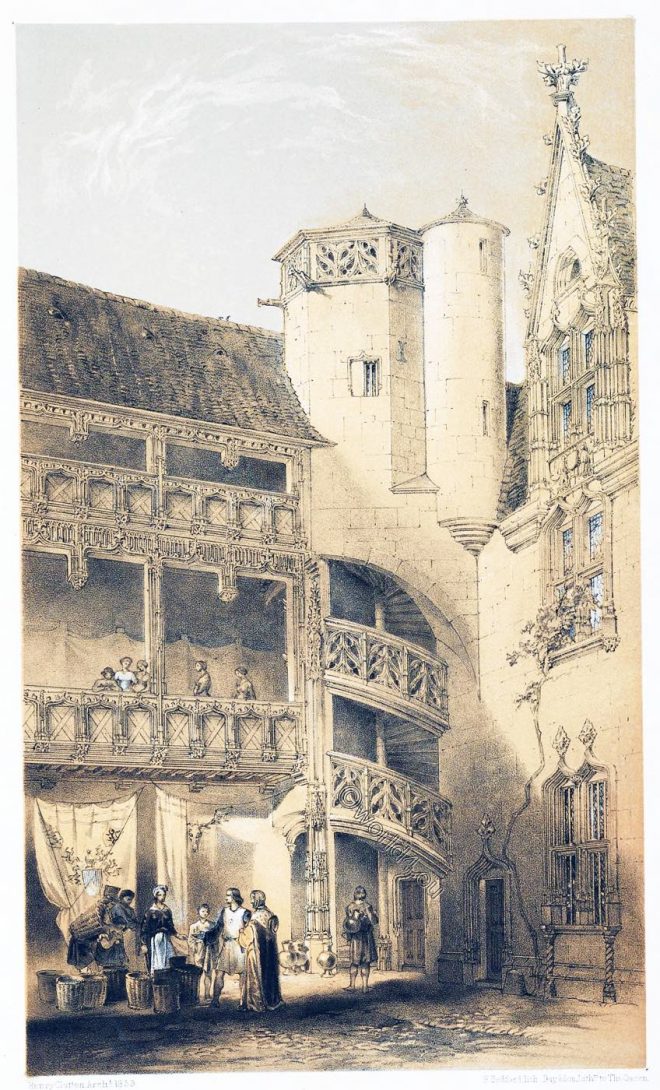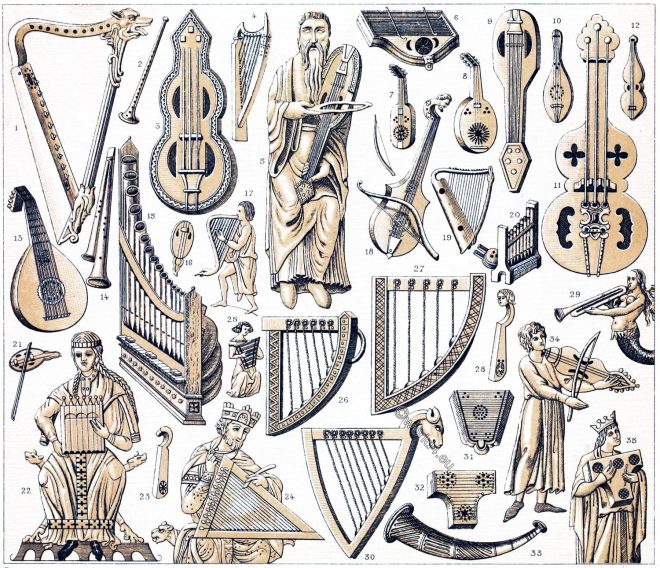A peasant with his wife and family. The feet of children are prevented from growing large. The Mother is in the dress of the northern provinces.
Tag: Customs
The Castalian Spring near the sanctuary of Delphi.
In ancient times, pilgrims purified themselves at this spring before entering the sacred precincts of Delphi.
The Cistern of Binbirdirek called the Thousand and One Pillars.
The Cistern of Binbirdirek or Cistern of Philoxenos called the Thousand and One Pillars is a man-made subterranean reservoir in Istanbul.
The medieval architecture of the Hôtel Chambellan at Dijon.
The Hôtel Chambellan at Dijon. It has hitherto been known by various names, — Hôtel Chambellan, Hôtel des Ambassadeurs, and Hôtel d’Angleterre.
Royal Crowns & Sceptre of the Frankish kings.
Crowns and scepters of the Merovingian and Carolingian Frankish kings in the Middle Ages.
The art of enamelling in India. Traditional enamelers.
The art of enamelling in India. Traditional enamelers of India at work.
A Procession of the Emperor Akbar Shah II surrounded by his court.
The procession represents the Emperor, Akbar Shah II., surrounded by all the pomp of his court, proceeding along the edge of the Jumna river, accompanied by the British Resident and his staff. It is very characteristic of the past glories of the great Moghul House.
Neapolitans eating macaroni. Italian scenery, manners and customs 1809.
The plate represents a country maccaronara; for so are called those public houses where nothing but macaroni is sold; and no village is without them. The Neapolitan macaroni is easily known by not being twisted like that of Genoa, but straight, or bent only at one end.
Musical instruments of the Middle Ages from the 12th to the 16th century.
Medieval musical instruments. Stringed instruments. The harp, the psaltery, the rota, the lute, the mandora, the guitar, the zither and the citole.
Venetian courtesan. Transportation. Gondolas. Italy. End of 16th c.
Italy. Traditional costumes from the end of the 16th century. Venetian women. Luxury of the Venetian courtesan. Transportation. Pack animals, Gondolas.










